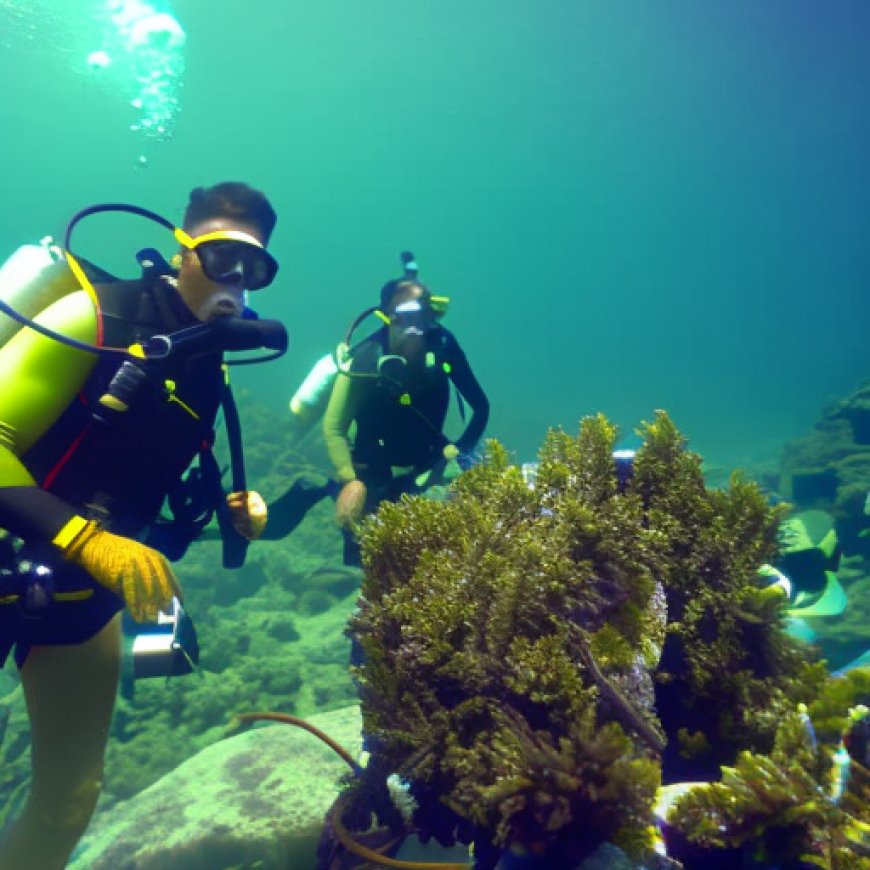Divers begin removing invasive aquatic plants from Emerald Bay
Divers begin removing invasive aquatic plants from Emerald Bay KTXL FOX 40 Sacramento


Divers Begin Removing Invasive Plants from Lake Tahoe
The Tahoe Regional Planning Agency (TRPA) announced that divers have started the process of removing invasive plants from Lake Tahoe. The removal efforts are in line with the Sustainable Development Goals (SDGs) and aim to protect the lake’s ecosystem.
Discovery of Eurasian Watermilfoil Infestation
Last year, a one-and-a-half-acre infestation of Eurasian watermilfoil was discovered in Emerald Bay. This invasive plant species poses a threat to the native aquatic plants and animals in the area.
Plant Removal Process
The TRPA stated that divers will be using suction and hand pulling methods to remove the invasive plants from the lake. The removal process will take place from Monday to September 22. Boaters are advised to be cautious and watch out for the workers below the water.
Past Treatment and Ongoing Surveillance
The TRPA mentioned that 6 acres in Emerald Bay were treated for aquatic weeds a decade ago. Since then, the area has been under regular surveillance to monitor the presence of invasive weeds. This proactive approach helps prevent the reintroduction of invasive species.
“This popular area attracts boaters from around the lake, and the underwater California State Park is under constant threat of reintroduction,” said Courtney Rowe, Senior Environmental Scientist with California State Parks. “When boats bring fragments of Eurasian watermilfoil from other parts of the lake, they can quickly become an infestation without ongoing monitoring and response.”
Impact on Water Quality and Ecosystems
The TRPA highlighted that if not removed quickly, the invasive plants can negatively impact water quality and aquatic ecosystems. This aligns with SDG 14: Life Below Water, which aims to conserve and sustainably use the oceans, seas, and marine resources.
Funding for Plant Removal
The funding for the plant removal project was sourced from the Lake Tahoe Restoration Act and the Tahoe Fund. These initiatives support the achievement of SDG 15: Life on Land, which focuses on protecting, restoring, and promoting sustainable use of terrestrial ecosystems.
“Lake clarity is at the center of what makes Tahoe iconic, and improving this famed clarity is a major priority for the Tahoe Fund,” said Amy Berry, CEO of the Tahoe Fund. “We were pleased to provide $50,000 for the removal of these weeds in Emerald Bay and will continue to support aquatic invasive species removal efforts that positively impact the health of our lake.”
SDGs, Targets, and Indicators
1. Which SDGs are addressed or connected to the issues highlighted in the article?
- SDG 6: Clean Water and Sanitation
- SDG 14: Life Below Water
- SDG 15: Life on Land
2. What specific targets under those SDGs can be identified based on the article’s content?
- SDG 6.3: By 2030, improve water quality by reducing pollution, eliminating dumping and minimizing release of hazardous chemicals and materials, halving the proportion of untreated wastewater, and substantially increasing recycling and safe reuse globally.
- SDG 14.1: By 2025, prevent and significantly reduce marine pollution of all kinds, particularly from land-based activities, including marine debris and nutrient pollution.
- SDG 15.8: By 2020, introduce measures to prevent the introduction and significantly reduce the impact of invasive alien species on land and water ecosystems and control or eradicate the priority species.
3. Are there any indicators mentioned or implied in the article that can be used to measure progress towards the identified targets?
- Indicator for SDG 6.3: Proportion of wastewater safely treated
- Indicator for SDG 14.1: Marine pollution index
- Indicator for SDG 15.8: Number of invasive alien species eradicated or controlled
Table: SDGs, Targets, and Indicators
| SDGs | Targets | Indicators |
|---|---|---|
| SDG 6: Clean Water and Sanitation | 6.3: By 2030, improve water quality by reducing pollution, eliminating dumping and minimizing release of hazardous chemicals and materials, halving the proportion of untreated wastewater, and substantially increasing recycling and safe reuse globally. | Proportion of wastewater safely treated |
| SDG 14: Life Below Water | 14.1: By 2025, prevent and significantly reduce marine pollution of all kinds, particularly from land-based activities, including marine debris and nutrient pollution. | Marine pollution index |
| SDG 15: Life on Land | 15.8: By 2020, introduce measures to prevent the introduction and significantly reduce the impact of invasive alien species on land and water ecosystems and control or eradicate the priority species. | Number of invasive alien species eradicated or controlled |
Behold! This splendid article springs forth from the wellspring of knowledge, shaped by a wondrous proprietary AI technology that delved into a vast ocean of data, illuminating the path towards the Sustainable Development Goals. Remember that all rights are reserved by SDG Investors LLC, empowering us to champion progress together.
Source: fox40.com

Join us, as fellow seekers of change, on a transformative journey at https://sdgtalks.ai/welcome, where you can become a member and actively contribute to shaping a brighter future.








